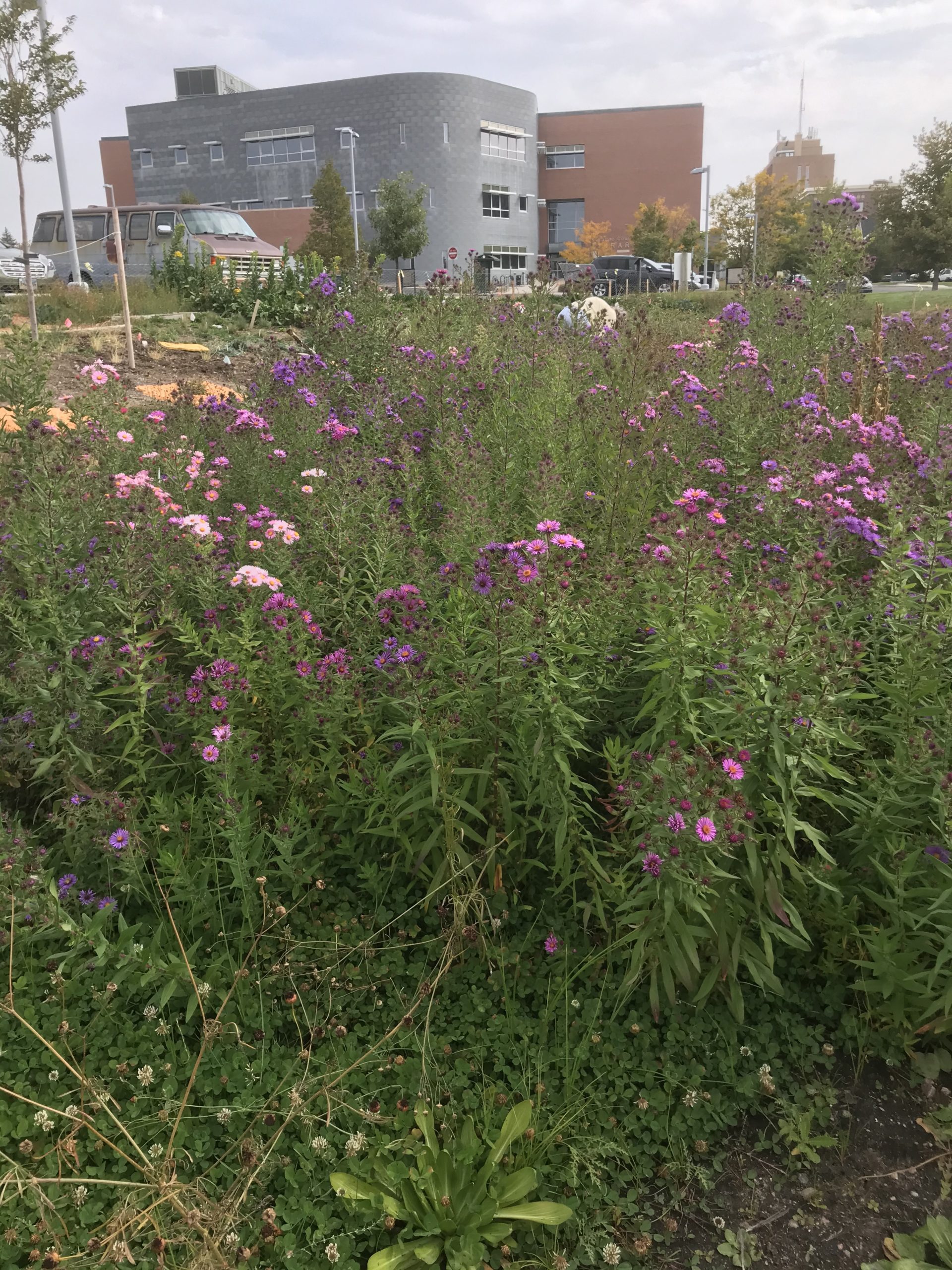Nancy Loomis, the project leader for the Community Wildlife Habitat Project, West Edge District, is returning to our blog for another post in her series about the Laramie County Library Rain Garden Project! Read below to learn about late season blooms and preparation for the winter.
It’s October, but there are still blooms providing interest to human spectators and sustenance to resident and migratory insects visiting the library’s rain garden. New England aster’s (Symphyotrichum novae-angliae, a native to Laramie County) purple and pink blooms are beginning to fade but they can still be seen in the lower level of the project site.

Stiff goldenrod’s (Solidago rigida, a native to Laramie County) yellow fluffy flowers add color along the north sidewalk. This particular plant is beloved plant by several native wasp species.

Seed eating birds, such as finches, regularly fly into the garden to feast on seeds still attached to plants such as the Maximillian sunflower (Helianthus maximilliani, a native to Laramie County). These birds also search the ground for seeds that have already fallen from the garden’s plants. Over the last few weeks, a nightly visit from a hungry hawk has created some mayhem in the garden. Also contributing to this fall garden mayhem are squirrels that occasionally pull plants out of their holes in order to bury the acorns they retrieve from the library’s burr oak trees (Quercus macrocarpa, a native to northeastern Wyoming). These are all excellent signs of an active urban wildlife habitat!
Volunteers are putting the project to bed for the 2020 season. This entails end-of-season chores such as seeding the rain garden with native plants that require cold stratification to germinate in the spring and seeding other native plants that require a host plant to survive, such as Indian Paintbrush species (Castilleja ssp.). Volunteers are also collecting seeds that will be available in the Seed Library’s 2021 offerings.
Since this is a multi-year project, end-of-season chores also include some spring season preparation. This includes multiple methods of weed smothering to better manage the active soil seed bank in the project area. Weed smothering techniques include covering areas with heavy black plastic or thickly mulched cardboard/multi-layers of newspaper to prevent early spring germination of cool season weeds. Gradually these areas will be uncovered and planted or seeded with native plants.

Please take advantage of our beautiful late summer weather and visit the rain garden throughout this fall season!
Nancy Loomis
Project Leader: Community Wildlife Habitat Project, West Edge District
